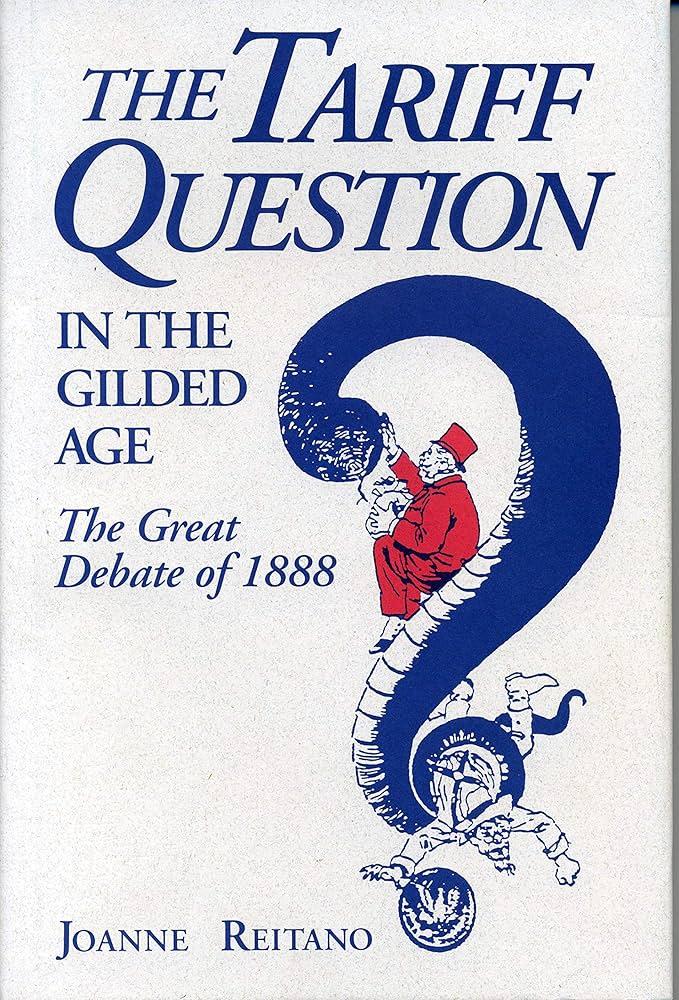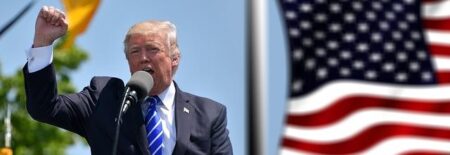Former President Donald Trump has repeatedly praised tariffs reminiscent of those implemented during the Gilded Age, a period marked by rapid industrial expansion alongside stark economic inequality. As policymakers debate the role of trade barriers in today’s global economy, historians and economists caution that while such tariffs fueled growth for American manufacturers in the late 19th century, they also coincided with widespread poverty and labor unrest. This report examines the complexities of Gilded Age tariff policies and their relevance to contemporary trade discussions.
Trump Revives Gilded Age Tariff Policies Amid Industrial Expansion and Social Inequality
President Trump’s recent emphasis on reinstating tariffs reminiscent of the Gilded Age has sparked a lively debate on the balance between economic growth and social equity. Advocates argue that protective tariffs can rejuvenate American manufacturing by fostering industrial expansion and shielding domestic industries from foreign competition. However, critics warn that such policies historically coincided with stark wealth disparities and entrenched poverty for working-class Americans, suggesting that the benefits of economic growth were unevenly distributed.
Key aspects of the Gilded Age tariff policies include:
- High tariffs on imported goods aimed at protecting nascent industries
- Rapid industrial growth, leading to the United States becoming a global economic power
- Widening gap between wealthy industrialists and impoverished laborers
- Minimal social safety nets or labor protections during periods of economic expansion
| Era | Tariff Rate | Industrial Growth | Poverty Level |
|---|---|---|---|
| Gilded Age (1870-1900) | ~40% | High | Significant |
| Trump Era (2017-2021) | Varied (~10-25%) | Moderate | Ongoing Issues |
Economic Impacts of 19th Century Protectionism Applied to Modern Trade Debates
Revisiting the 19th century’s protectionist policies through a modern lens exposes a complex economic landscape where tariffs acted as double-edged swords. While Gilded Age tariffs spurred rapid industrial growth by shielding emerging American factories from foreign competition, they simultaneously entrenched social inequalities and limited consumer choice. This historical paradox resonates in today‚Äôs trade debates, where proponents argue that tariffs can revitalize domestic manufacturing, but critics caution against repeating the pitfalls of increased prices and suppressed innovation.
Analyzing the 19th century data reveals a pattern of mixed economic outcomes:
- Industrial Expansion: U.S. manufacturing output grew substantially, positioning the country as a global industrial leader.
- Consumer Impact: Tariffs raised the cost of goods, cutting into purchasing power for average Americans.
- Labor Inequality: While some workers benefited from job creation, many faced low wages amid stark income disparities.
- International Relations: Protectionism triggered retaliatory tariffs from trading partners, complicating diplomatic ties.
| Aspect | 19th Century Impact | Modern Trade Parallel |
|---|---|---|
| Manufacturing Growth | Rapid industrialization under tariff protection | Calls for revitalizing declining sectors |
| Consumer Prices | Increased cost of imported goods | Concerns over inflation and affordability |
| Labor Market | Job creation with uneven wage distribution | Debates over fair wages and job security |
| International Trade | Trade wars and retaliatory tariffs | Risks of escalating global trade tensions |
Balancing Growth and Poverty Lessons from the Gilded Age for Today’s Policymakers
During the Gilded Age, the United States experienced a surge in industrial expansion, fueled by protective tariffs that shielded burgeoning American industries from foreign competition. This era demonstrated that while tariffs can stimulate economic growth by fostering domestic manufacturing, they often come with complex socioeconomic trade-offs. The rise of powerful industrial tycoons and rapid urbanization was shadowed by vast income inequality and deteriorating living conditions for many laborers. Policymakers today can glean that economic advancement must be pursued with a comprehensive strategy addressing equitable wealth distribution.
Key lessons for modern leaders include:
- Implementing balanced trade policies that encourage growth without alienating vulnerable communities.
- Creating social safety nets to mitigate poverty resulting from market transitions.
- Investing in infrastructure and education to provide long-term opportunities beyond mere industrial output.
| Gilded Age Impact | Modern Policy Insight |
|---|---|
| High tariffs boosted domestic manufacturing. | Strategic tariffs can protect sensitive industries. |
| Wealth concentrated among industrial magnates. | Policies should curb extreme inequality. |
| Poor labor conditions led to unrest and reform. | Labor rights and community welfare are vital. |
Policy Recommendations to Address Income Disparities While Boosting Domestic Industries
To effectively reduce income disparities while revitalizing domestic industries, policymakers must adopt a multi-faceted approach that extends beyond protectionist tariffs alone. Investment in workforce development is paramount, focusing on reskilling workers displaced by globalization and automation. Equally important is incentivizing innovation and research within key manufacturing sectors through tax credits and grants, which can stimulate sustainable industrial growth without imposing undue costs on consumers. Strengthening labor rights and ensuring fair wages alongside tariffs can prevent the widening of poverty pockets that historically accompanied protectionist policies.
- Strategic Tariff Implementation: Use tariffs selectively to protect emerging industries rather than broad-based taxation on imports.
- Comprehensive Social Safety Nets: Expand unemployment benefits and healthcare to support workers transitioning between sectors.
- Infrastructure Modernization: Invest in transportation and digital infrastructure to increase domestic production efficiency.
- Targeted Small Business Support: Provide low-interest loans and technical assistance to domestic startups competing globally.
| Policy Area | Expected Outcome | Time Frame |
|---|---|---|
| Workforce Training Programs | Reduced unemployment, higher wages | 2-5 years |
| Incentives for R&D | Increased industrial innovation | 3-7 years |
| Infrastructure Upgrades | Improved supply chain efficiency | 5-10 years |
| Social Safety Net Expansion | Lower poverty rates | Immediate to 3 years |
Insights and Conclusions
As the debate over trade policy continues, the legacy of Gilded Age tariffs serves as a complex backdrop to contemporary discussions. While those tariffs helped fuel industrial expansion, they also coincided with significant economic inequality and hardship for many Americans. Understanding this duality is crucial as policymakers weigh the potential benefits and consequences of reintroducing similar measures today. The lessons from the past underscore the need for careful consideration of how trade policies impact all sectors of society, not just economic growth figures.




